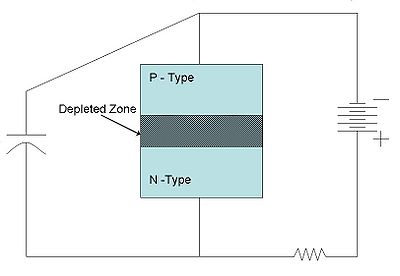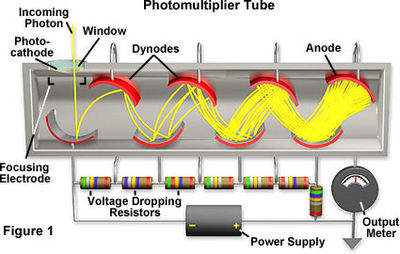Difference between revisions of "Jie's Introduction"
m |
|||
| Line 12: | Line 12: | ||
The effect temperature on the Dark Rate of the SiPM must be examined to determine the range of temperatures that the SiPM can opperate effectively. | The effect temperature on the Dark Rate of the SiPM must be examined to determine the range of temperatures that the SiPM can opperate effectively. | ||
| + | |||
| + | Photons = faked thermal fluctuations - calibration technique | ||
Revision as of 22:03, 6 December 2007
There is a need for a new and innovative photon detector that can replace the photomultiplier tube (PMT) in particle-physics experiments. This new photon detector has to fix the shortcomings of the current photon detector, yet retain the advantages that the PMT provided. If such a photon detector could be found, it would revolutionize the way photons are detected in high energy physics and could influence the design and structure of detectors designed for High Energy Physics.
This new photon detector, the Silicon Photomultiplier (SiPM) attempts to fix the primary flaws of the PMT, namely its large size and its sensitivity to magnetic fields with a completely different method of detecting photons.
Instead of using a series of dynodes to amplify the signal of the photon, the SiPM uses 2 highly charged electron plates that are placed closely together. When a photon lands on one of the plates, the energy in the photon dislodges one of the electrons on the charge plate which releases the energy built up in the plates, causing a pulse. This method of detecting photons makes it impervious to the strongest of magnetic fields because the entire process happens electrically. The PMT, on the other hand, needs the electron to travel a certain trajectory, therefore making it very susceptible to magnetic fields. If the electrons in the PMT veer off from their course due to magnetic fields, then they won't make it to the next dynode and produce a pulse. Also, since the inner workings of the SiPM are all electrical, it is possible to be made much smaller in size compared to the PMT.
With these two primary advantages of the SiPM over the PMT, the SiPM seems to be a suitable replacement as the leading photon detector in particle physics.
While the SiPM has these advantages over the PMT, physicists must also be sure that it can perform acceptably in situations where the PMT excels. One such attribute is the PMT's resistance to temperature. It shows the same excellent performance at almost any temperature as long as the temperature isn't as high as its melting poing. In contrast, the semi-conducting material used to make the SiPM depends heavily on the temperature that it operates at. A higher temperature will make the SiPM much more conductive, and therefore, more likely to produce a pulse, and in consequence, may cause many more false detections. The rate of these false detections, when occur due to the presence of thermal energy in the SiPM, is called Dark Rate.
The effect temperature on the Dark Rate of the SiPM must be examined to determine the range of temperatures that the SiPM can opperate effectively.
Photons = faked thermal fluctuations - calibration technique

